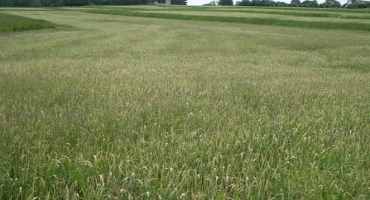By John Tooker
As wheat enters heading in southern Pennsylvania counties, it would be wise to scout fields for cereal leaf beetle. In our region, this pest species most often infests wheat and oat fields, though other small grain species can also be infested. Unfortunately, fields with large populations are often diagnosed from the cab of a vehicle as fields turn frosted from heavy leaf feeding (Figure 1); frosted fields are too late to save. Substantial populations have also been detected when growers inspect their sprayers after applying fungicides and finding larvae all over the sprayer (Figure 2). Scouting fields more regularly can catch these infestations.

Figure 1. A “frosted” wheat field in Berks County that was damaged heavily by cereal leaf beetle.
Because fungicide applications to protect wheat from head scab are common this time of year, growers often wonder if they should include an insecticide in their spray tanks to protect against cereal leaf beetle or other insect pests. Rather than automatically including the insecticide, my recommendation is to scout fields for cereal leaf beetle and see if fields harbor economically damaging populations because natural enemies often control cereal leaf beetle and infestations can be very spotty. If scouting reveals populations that exceed one or more larvae per stem, treatment is warranted, especially if larvae are feeding on the flag leaf prior to head emergence. Damage later in head filling does not appear to be significant, and if adults are seen late in spring, it is likely too late to manage this pest species. For details on this pest’s life cycle and management options, see our factsheet .